Trekking Routes in Sapa: Exploring the Splendid Heights
Nestled in the northern mountains of Vietnam, Sapa is a land where the clouds kiss the terraced hills, and the vibrant cultures of ethnic minorities flourish amidst the breathtaking scenery. Known for its awe-inspiring landscapes and rich cultural tapestry, Sapa has become a beacon for trekking enthusiasts from around the world. With routes that weave through verdant valleys, cascading rice terraces, and charming villages, each trek offers a unique glimpse into the heart of this extraordinary region. Whether you’re an experienced trekker seeking a challenge or a casual adventurer eager to explore, Sapa’s trekking routes promise an unforgettable journey into nature and tradition.
Vietnam
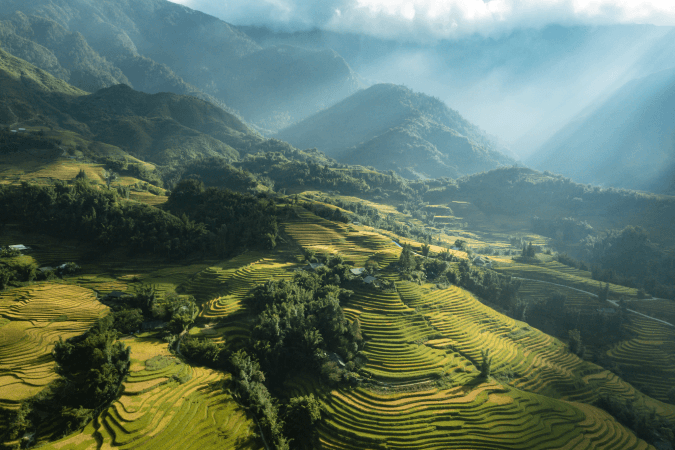
Experience Sapa’s Natural Beauty
Where is Sapa Town?
“A summer hideout for the French colonialists once, Sa Pa is a top tourism spot today,” said Hoang Phong, a travel reporter at VnExpress News. Sapa, a picturesque town located in the Hoang Lien Son mountain range of northwest Vietnam, is a destination that effortlessly blends natural beauty with cultural richness. Known for its cool climate and mist-covered mountains, Sapa offers a refreshing escape from the hustle and bustle of urban life. The town serves as a gateway to some of Vietnam’s most spectacular trekking routes, attracting adventurers eager to explore its scenic and cultural treasures.
Trekking Experience in Sapa
Trekking in Sapa is more than just an outdoor activity; it is a journey through time and tradition. The region's trails lead trekkers through landscapes that have been shaped over centuries by the local communities. The terraced rice fields, a hallmark of Sapa’s scenery, are a testament to the ingenuity and perseverance of the ethnic minority farmers. As you trek through these areas, you witness firsthand the harmonious relationship between the people and their environment.
The popularity of trekking in Sapa has also been bolstered by the allure of Mount Fansipan, the highest peak in Indochina. Fansipan, sometimes known as the "Roof of Indochina," stands at 3,143 meters and poses a tough task to anyone attempting to reach its summit. Beyond Fansipan, there are numerous trails that cater to all levels of trekkers, from gentle walks through scenic valleys to demanding climbs up steep mountain paths.
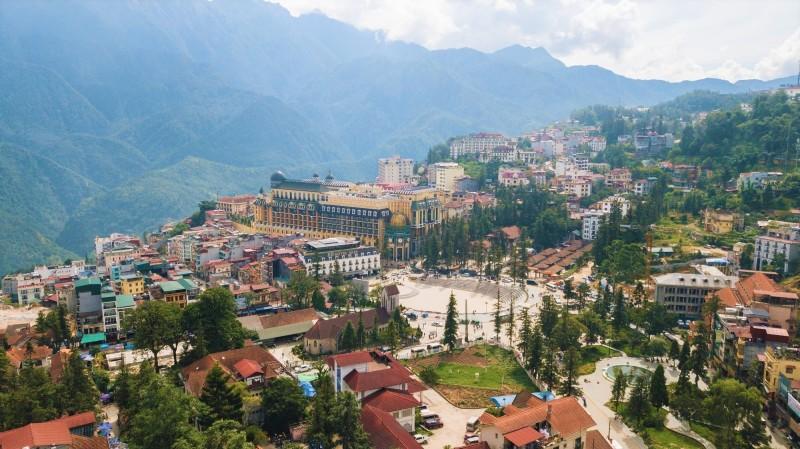
Sapa Town - © ThanhNien News
Best Trekking Routes in Sapa
Sapa's diverse trekking routes offer a spectrum of experiences, each promising a unique adventure through breathtaking landscapes and cultural encounters. Here, we delve into five best trekking routes, each with its own distinct charm and level of challenge.
Fansipan Trekking Route
Fansipan with its 3,143 meters in height is Vietnam's highest peak and a must-see for avid trekkers. The trek to the summit of Fansipan is a challenging journey that requires physical endurance and determination.
- Difficulty Level: Challenging. This trek is suitable for experienced trekkers who are prepared for steep ascents and rugged terrain. The trek typically takes two to three days, with overnight camping or staying in local lodges.
- Highlights: The trek offers stunning panoramic views of the Hoang Lien Son mountain range and the lush valleys below. As you ascend, you'll traverse diverse landscapes, from dense bamboo forests to rocky mountain paths. The peak rewards you with a breathtaking view that spans the borders of Vietnam, Laos, and China.
- Interesting Fact: According to local legend, Fansipan was named after a Hmong king who once ruled the region. The peak is also a significant cultural symbol for the Hmong people, reflecting their resilience and connection to the land.
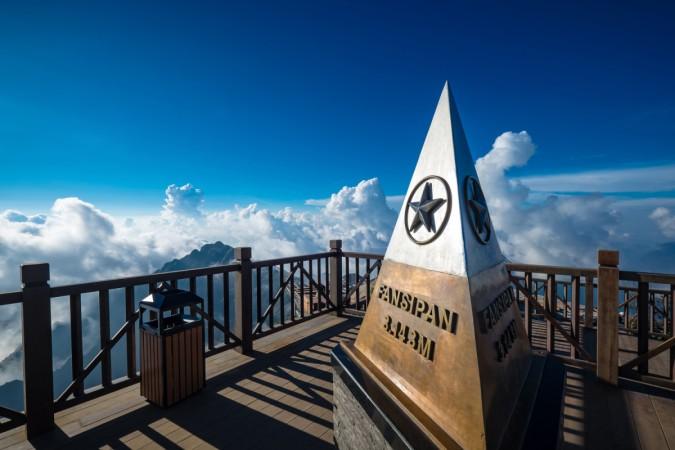
Fansipan Trekking Route - © VnExpress
Muong Hoa Valley Trekking Route
The Muong Hoa Valley trek is a scenic route that takes you through some of Sapa's most picturesque landscapes, including terraced rice fields and traditional villages inhabited by the Hmong, Dao, and Tay ethnic groups.
- Difficulty Level: Moderate. This trek is suitable for most fitness levels and can be completed in a day or two. The paths are generally well-trodden, but some sections can be steep and uneven.
- Highlights: As you walk through the valley, you'll witness the stunning terraced rice fields that cascade down the hillsides, a testament to the ingenuity of local farmers. The trek also offers rich cultural encounters with ethnic minority communities, providing insights into their daily lives and traditions.
- Interesting Fact: The Muong Hoa Valley is home to ancient rock carvings, believed to be thousands of years old. These petroglyphs, created by early inhabitants, depict human figures, animals, and abstract patterns, adding a layer of historical intrigue to your trek.
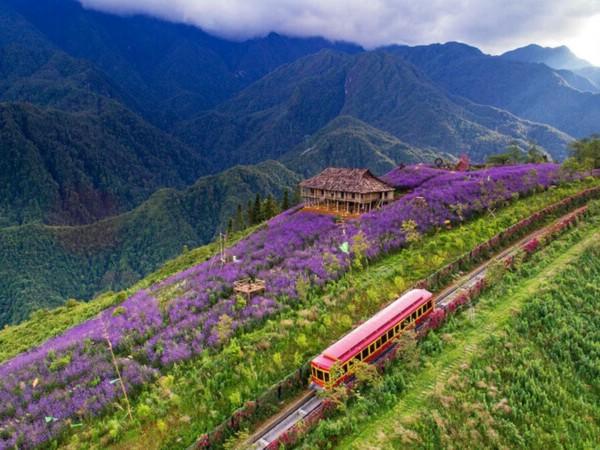
Muong Hoa Valley Trekking Route - © gather
Cat Cat Village Trekking Route
Just a short distance from Sapa town, the trek to Cat Cat Village offers a glimpse into the traditional lifestyle of the Black Hmong people. This trek is perfect for those with limited time who still want to experience Sapa's cultural richness.
- Difficulty Level: Easy. This hike is appropriate for novices and may be finished in a few hours. The path is well-maintained and not too strenuous.
- Highlights: The village is known for its traditional Hmong houses, handicrafts, and beautiful waterfall. Visitors can explore the local market, where artisans sell handmade textiles and jewelry, and enjoy cultural performances showcasing traditional music and dance.
- Interesting Fact: Cat Cat Village was established in the 19th century as a retreat for French colonialists. Today, it has become a popular destination for tourists seeking to experience Hmong culture and hospitality.
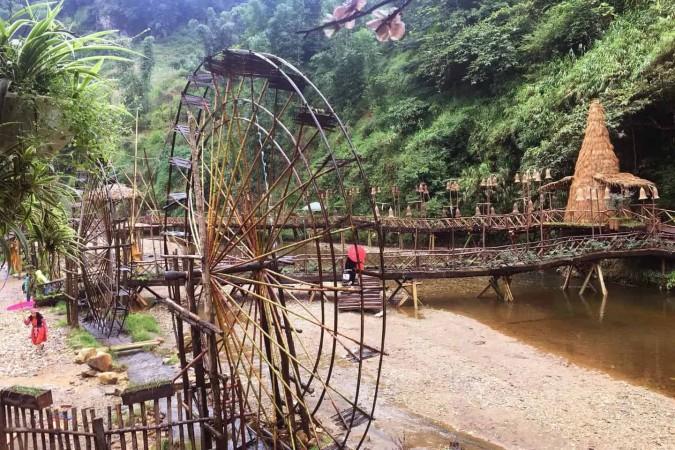
Cat Cat Village Trekking Route - © gather
Ta Phin Village Trekking Route
The trek to Ta Phin Village takes you through a vibrant landscape of rice paddies, bamboo forests, and limestone hills. Ta Phin is home to the Red Dao people, known for their unique customs and traditional medicine.
- Difficulty Level: Moderate. This trek involves some steep climbs and can be completed in a day. It is suitable for people who are relatively fit
- Highlights: Ta Phin Village offers a rich cultural experience, with opportunities to learn about the Red Dao's traditional herbal baths and intricate embroidery. The village is also surrounded by stunning natural scenery, including caves and lush greenery.
- Interesting Fact: The Red Dao people are renowned for their medicinal knowledge, particularly their herbal baths, which are believed to relieve muscle pain and improve health. These baths use a mix of over a dozen different herbs collected from the surrounding mountains.
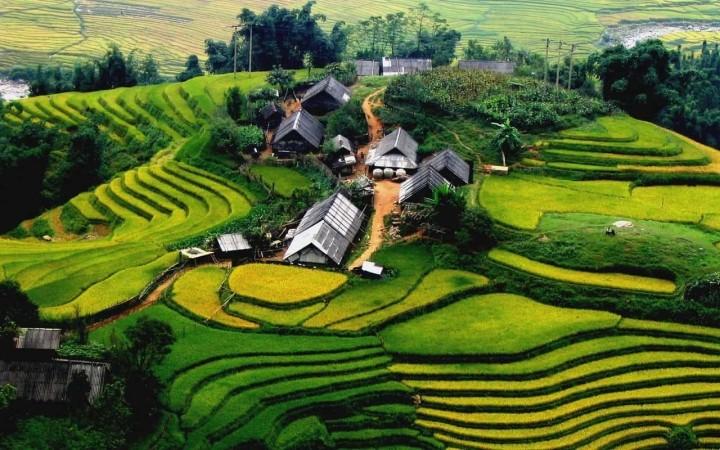
Ta Phin Village Trekking Route - © Vietnam Discovery
Sin Chai Village Trekking Route
Sin Chai Village is an off-beat-road destination, offering trekkers a more authentic and serene experience. The trek takes you through dense forests and along mountain streams, providing a peaceful retreat from the more crowded routes.
- Difficulty Level: Moderate to challenging, depending on the specific path chosen. This hike is great for anyone wanting a more peaceful, off-the-beaten-path excursion.
- Highlights: The village is inhabited by the Black Hmong people, who are known for their traditional indigo-dyed clothing and farming practices. The trek offers stunning views of the Hoang Lien Son range and an intimate look at rural life in Sapa.
- Interesting Fact: The Black Hmong are skilled farmers and artisans. They create intricate batik patterns on their clothing using a wax-resistant dyeing technique that has been passed down through generations.
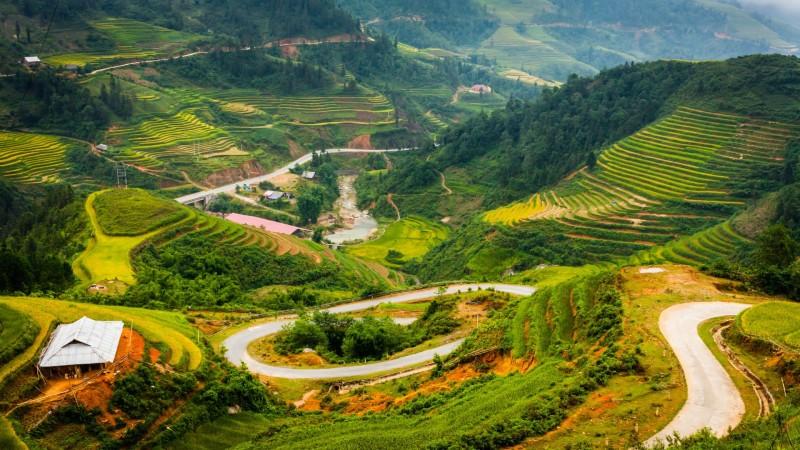
Sin Chai Village Trekking Route - © gather
Best Time For Trekking in Sapa
Sapa's unique climate, influenced by its elevation and location, creates a tapestry of experiences throughout the year. Understanding Sapa’s seasonal fluctuations is critical for organizing a hiking expedition that suits your interests and skills.
- Spring (March to May): Spring in Sapa is a time of renewal and vibrant colors. This season offers mild temperatures, ranging from 15°C to 25°C, making it ideal for trekking. The trails are dry and accessible, and the visibility is excellent, providing stunning panoramic views of the terraced fields and mountains.
- Summer (June to August): Summer brings warmth and frequent rain showers to Sapa. The temperatures range from 20°C to 30°C, creating a lush, green landscape. While the rain adds beauty to the rice terraces, it can also make the pathways slippery and difficult.
- Autumn (September to November): Autumn is undoubtedly the greatest season to visit Sapa for hiking. The weather is cool and dry, with temperatures ranging from 10°C to 20°C. The clear skies and crisp air offer perfect conditions for trekking, making this season a favorite among both novice and experienced trekkers.
- Winter (December to February): Winter in Sapa is characterized by cold temperatures, often dropping to below 10°C, and occasional snowfall on higher altitudes like Fansipan. The landscape takes on a mystical quality, with mist-covered mountains and frosty mornings. While the trails can be more challenging due to the cold and potential ice, winter trekking offers a unique and serene experience.
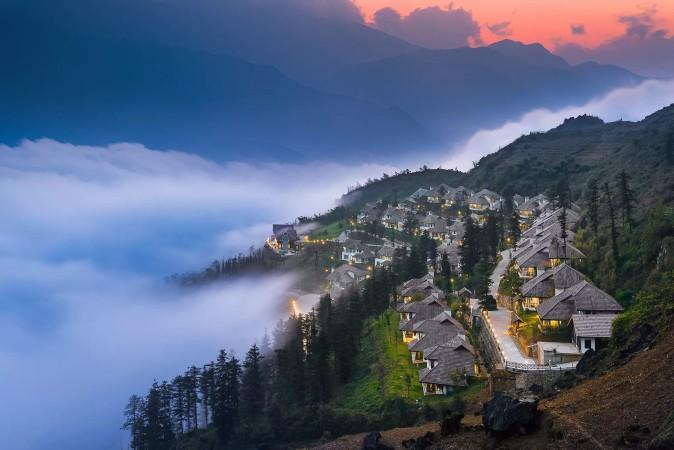
Sapa among the mist - © Vinpearl
Preparation and Tips for Trekking in Sapa
Embarking on a trekking adventure in Sapa requires careful preparation to ensure a safe and enjoyable experience. Here are some essential tips and guidelines to help you get ready for your trek.
Essential Gear
- Footwear: Sturdy, comfortable hiking boots with good ankle support are a must. To avoid blisters, make sure they're fully broken-in.
- Clothing: Layered clothing is ideal to adapt to changing weather conditions. Include moisture-wicking base layers, insulating mid-layers, and a waterproof upper layer. Don’t forget a hat, gloves, and a warm jacket for colder weather.
- Backpack: A durable, comfortable backpack with a capacity of 20-30 liters for day treks, or larger if you’re camping overnight. Ensure it has a rain cover.
- Hydration and Nutrition: Carry enough water for your trek, and consider a hydration system for easy access. Remember to carry high-energy foods such as almonds, dried fruits, and energy bars.
- Navigation Tools: A map, compass, or GPS gadget is necessary. While many trails are well-marked, having a navigation tool ensures you stay on track.
- Safety Gear: A basic first-aid kit, flashlight with extra batteries, multi-tool, and whistle are essential safety items.
- Trekking Poles: These can help reduce strain on your knees, especially on steep descents.
- Strength Training: Engage in regular cardio exercises such as running, cycling, or swimming to build endurance.
- Acclimatization: If you’re trekking to high altitudes, such as Fansipan, allow time to acclimatize to prevent altitude sickness. Gradually increase your altitude tolerance over several days.
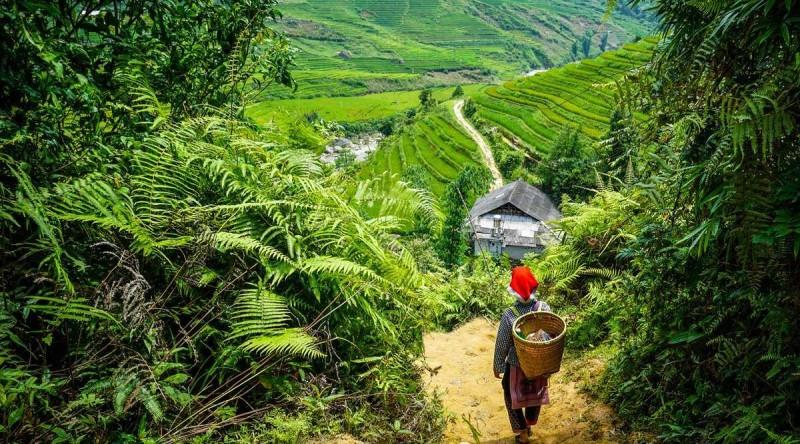
Trekking in Sapa - © Phuotvivu
Cultural Etiquette
- Dress Modestly: While trekking, dress modestly, especially when visiting villages and religious sites. Avoid wearing revealing clothing.
- Ask for Permission: Always ask for permission before taking photographs of people or their homes.
- Respect Traditions: Be aware of local norms and customs. For example, it’s polite to accept food or drink offered by locals, even if you don’t consume it.
- Minimize Impact on Environment: Follow Leave No Trace principles by not littering, staying on designated trails, and respecting wildlife and plants.
Unique Experiences and Cultural Insights
Trekking in Sapa is not just about traversing scenic landscapes; it’s also an opportunity to immerse yourself in the rich cultural tapestry of the region. Here are some unique experiences and cultural insights you can look forward to.
Ethnic Minority Encounters
Sapa is home to several ethnic minority groups, each with its own distinct traditions and way of life. Engaging with these communities offers invaluable cultural insights:
- Hmong People: The Hmong are one of the largest ethnic groups in Sapa. Known for their intricate embroidery and indigo-dyed clothing, the Hmong are skilled farmers and artisans. Visiting a Hmong village, you’ll witness traditional farming practices and perhaps learn how to create batik patterns.
- Red Dao People: Recognizable by their bright red headscarves and intricate jewelry, the Red Dao are renowned for their herbal medicine. A visit to a Red Dao village might include a demonstration of traditional herbal baths, which are believed to have healing properties.
- Tay and Giay People: These groups are known for their stilt houses and vibrant festivals. Engaging with the Tay and Giay can provide insights into their unique architectural styles and community gatherings.
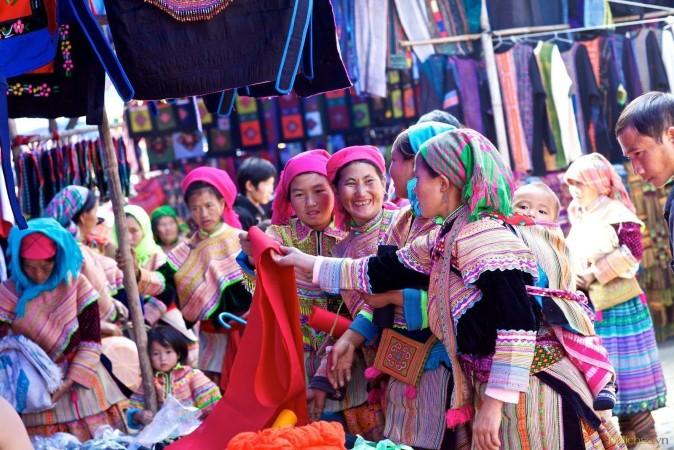
Ethnic Minority Market - © gather
Local Cuisine and Culinary Experiences
Sapa’s diverse cultural landscape is reflected in its cuisine. By engaging with local communities and experiencing the culinary delights of Sapa, you’ll enrich your trekking adventure with meaningful cultural insights and unique experiences that will stay with you long after your journey ends. So, it is safe to say that trying local dishes is an integral part of the trekking experience:
- Must-Try Dishes: Sapa is famous for its hearty soups, grilled meats, and fresh vegetables. Dishes like “thắng cố” (a traditional Hmong soup), “cơm lam” (bamboo rice), and “lợn cắp nách” (free-range pork) are must-tries.
- Market Visits: Visiting local markets is a great way to explore the culinary diversity of Sapa. Markets are bustling with vendors selling fresh produce, spices, and handmade goods. It’s an opportunity to sample street food and buy ingredients to cook with your homestay hosts.
Articles for you

Experience Aboard The RV Indochine II - A Mekong Cruise With Tweet World Travel
The RV Indochine II is a luxury river cruise ship, offering an unforgettable journey through many attractions along the Mekong River. Built in 2017, this upscale vessel combines colonial elegance with modern conveniences to create a comfortable yet stylish environment for its crew and passengers. The ship’s intimate size makes it ideal for those seeking a more personal cruising experience while exploring Vietnam and Cambodia rich culture, scenery, and heritage. Whether you're gazing at the landscape from your private balcony or enjoying authentic local cuisine, RV Indochine II promises an exotic adventure like no other.

Witness Stilt Fishing In Sri Lanka: An Eco-Tourism Experience
Sri Lanka, renowned for its stunning beaches and rich cultural heritage, harbors a unique tradition that has captivated travelers for centuries: stilt fishing. This ancient practice, passed down through generations of coastal communities, blends artistry with necessity, offering a glimpse into a way of life intimately connected to the island's coastal rhythms. Stilt fishing in Sri Lanka isn't merely a means to catch fish; it's a cultural emblem, embodying the resilience and ingenuity of Sri Lanka's fishing communities.

Make Your Trip Stress-Free With The Tweet Trip App
Embark on your next adventure with confidence by downloading the Tweet Trip App, available for both iOS and Android. This essential travel companion allows you to view your detailed itinerary, stay connected with your tour guide and fellow travelers, receive real-time updates, and provide feedback effortlessly. With features like in-app messaging, emergency assistance, and location sharing, the Tweet Trip App ensures you travel smarter, stay connected, and enjoy a seamless, worry-free journey. Get started today and make the most of your travel experience with Tweet World Travel.

Pedal Through Paradise: Unveiling Cambodia's Hidden Gems on Two Wheels
The gentle whir of bicycle wheels mingles with the distant chants of monks as you glide past emerald rice paddies stretching to the horizon. This is Cambodia - a sensory explosion waiting to be experienced on two wheels. At Tweet Tours, we believe there's no better way to immerse yourself in the Kingdom of Wonder than by bicycle.
Cambodia isn't just a destination; it's a living, breathing tapestry of ancient wonders, natural beauty, and vibrant culture. Our carefully crafted cycling tours take you beyond the typical tourist haunts, offering a unique perspective on this captivating country. Ready to clip in and discover the magic of Cambodia? Let's ride!

Trekking in the Himalayas: A Journey Through Nepal's Majestic Peaks
The Himalayas rise from the earth like colossal guardians, their snow-capped peaks piercing the sky in a display of nature's raw power and beauty. Nepal, nestled at the heart of this mountain range, serves as the gateway to some of the most breathtaking trekking experiences on the planet. Here, the air is crisp and thin, filled with the promise of adventure and the whispers of ancient tales.
With Tweet Tours, as you set foot on these hallowed trails, you're not just a traveler - you're a modern-day explorer, following in the footsteps of legendary mountaineers and age-old traders. Each step takes you further into a world where nature reigns supreme and human resilience is tested against the backdrop of some of the world's highest peaks.
From the moment your boots touch the ground in Kathmandu, you'll feel the pull of the mountains. The bustling streets of the capital, with their sensory overload of sights, sounds, and smells, soon give way to serene mountain paths where the only soundtrack is the crunch of gravel underfoot and the distant tinkling of yak bells.

Exploring Mui Ne's Wonders: Unique Attractions & Local Dishes
Nestled along the southeastern coast of Vietnam, Mui Ne emerges as a captivating gem, blending natural wonders with cultural richness. Renowned for its stunning landscapes and unique attractions, Mui Ne beckons travelers seeking both relaxation and adventure in equal measure. Mui Ne's renowned beach dunes, bustling fishing towns, and excellent local food await exploration at every turn.
The allure of Mui Ne lies not only in its pristine beaches and crystal-clear waters but also in its diverse range of activities catering to every traveler's whims. Whether you're drawn to thrilling water sports like kitesurfing and windsurfing on its dynamic shores or seeking tranquility amidst the picturesque Fairy Stream, Mui Ne promises an unforgettable journey filled with discovery.
